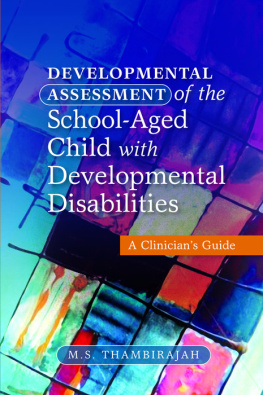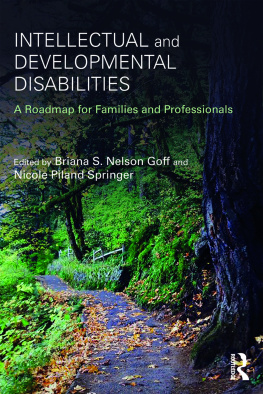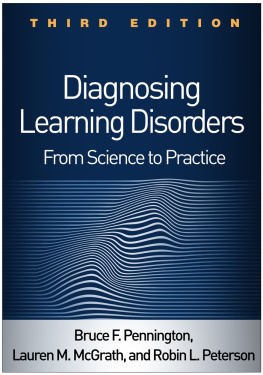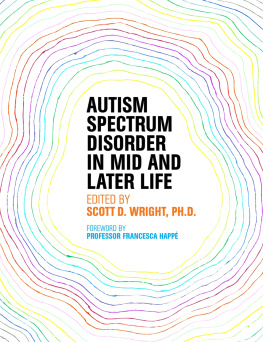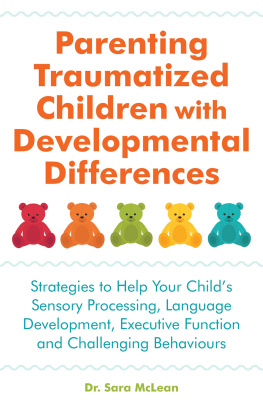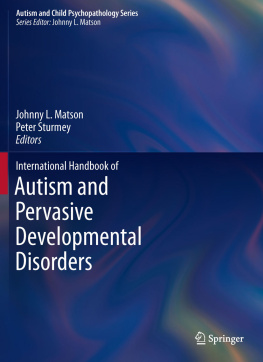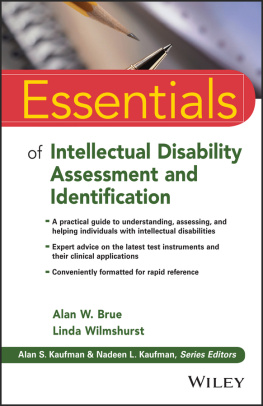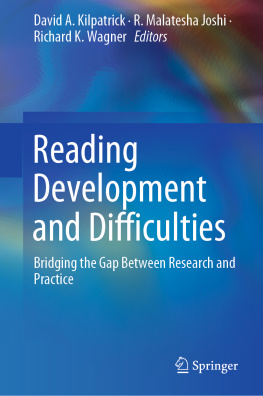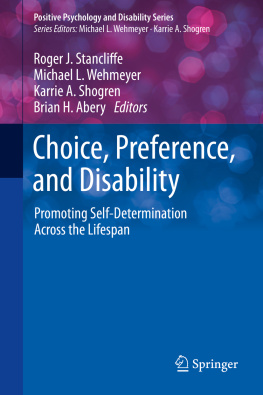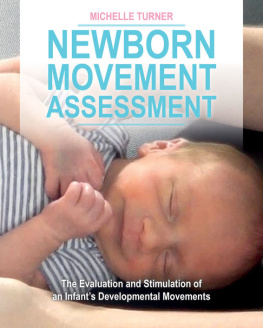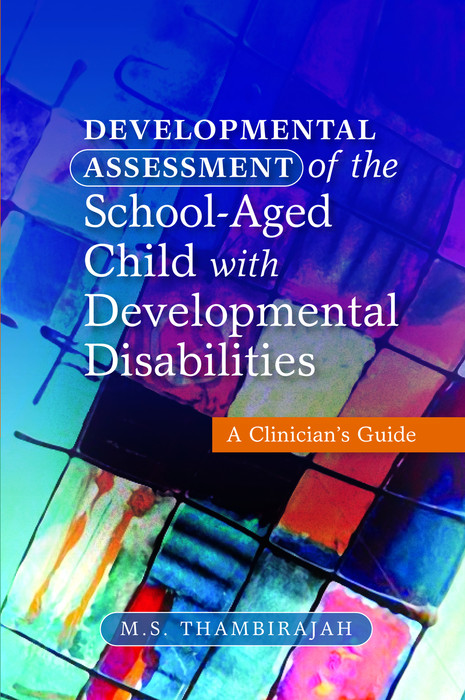Developmental Assessment of the School-Aged Child with Developmental Disabilities
A Clinicians Guide
M.S. Thambirajah
Jessica Kingsley Publishers
London and Philadelphia
Parts of Chapter 4 from Advances in Psychiatric Treatment, 16, 299307; 380387, reproduced by permission from The Royal College of Psychiatrists
First published in 2011
by Jessica Kingsley Publishers
116 Pentonville Road
London N1 9JB, UK
and
400 Market Street, Suite 400
Philadelphia, PA 19106, USA
www.jkp.com
Copyright M.S. Thambirajah 2011
All rights reserved. No part of this publication may be reproduced in any material form (including photocopying or storing it in any medium by electronic means and whether or not transiently or incidentally to some other use of this publication) without the written permission of the copyright owner except in accordance with the provisions of the Copyright, Designs and Patents Act 1988 or under the terms of a licence issued by the Copyright Licensing Agency Ltd, Saffron House, 610 Kirby Street, London EC1N 8TS. Applications for the copyright owners written permission to reproduce any part of this publication should be addressed to the publisher.
Warning: The doing of an unauthorised act in relation to a copyright work may result in both a civil claim for damages and criminal prosecution.
Library of Congress Cataloging in Publication Data
A CIP catalog record for this book is available from the Library of Congress
British Library Cataloguing in Publication Data
A CIP catalogue record for this book is available from the British Library
ISBN 978 1 84905 181 1
eISBN 978 0 85700 325 6
Converted to eBook by EasyEPUB
Preface
This is a book about assessment of developmental problems in children and young people. Everything else in the book provides the necessary context for assessment. In order to assess any entity, one has to be clear about what one is assessing. Recently, we have witnessed an upsurge in our knowledge of childhood development driven by findings from brain imaging, neuropsychology and genetics. Research into acquisition of reading, language and numerical skills and social interaction in the typical child has produced a vast amount of data that need to be integrated into any assessment process.
Developmental assessment in children has traditionally focused on infants and young children, usually the under 5s. But development does not stop at 5. Of late, clinicians have been seeing many children in their middle childhood and indeed adolescents, who have one developmental disorder or another. The reason for this apparent increase needs careful attention from academics and policy makers. While the more serious forms of developmental disorders such as genetic syndromes are undoubtedly identified during infancy and early childhood, many of the milder forms of developmental disorders tend to go undetected and present with associated problems in later childhood. The second purpose of the book is, therefore, to direct the attention of clinicians to milder forms of developmental disorders in school-aged children. For practical purposes the most pressing need is to identify reliably those children and young people with learning disabilities whose deficits are milder and subtle, and yet have a major impact on their lives.
Following a general introduction to assessment, the chapters in the book take the reader through the various domains of development and their assessment. Each of these chapters is organised in three sections: an introduction to the development of each domain of development, a brief account of the disorder and assessment of the disorder. The emphasis is on assessment. Due to considerations of space, the other sections have been kept to a minimum. Psychopathological conditions such as attention-deficit hyperactivity disorder (ADHD), conduct disorder, anxiety and depression in children are not included, although there is an argument to include some of them under developmental disorders. A practical account of these conditions is described elsewhere (Thambirajah 2007). Chapter 10 is perhaps somewhat out of the ordinary in that it is a conglomeration of various topics, some of which include psychopathological conditions. The separation between developmental disorders and psychopathological ones is, at best, arbitrary. At what point does normative aggression in childhood get to be regarded as pathological? The extension of normal development to include some aspects of abnormal functioning has, therefore, been inevitable.
Historically, the approaches to developmental disorders have pertained to one discipline, be it psychiatry, paediatrics, neurology, psychology or genetics. As a consequence, research and practice have developed along diverse lines. These have been found inadequate for dealing with complex variables at various levels of organisation (Morton 2004). Recent findings from research have widened the focus of analysis (Buss and Hawley 2010; Rutter 2005) and developmental disorders now occupy the territory where neuroscience, cognitive developmental psychology, behavioral paediatrics and psychiatry intersect.
This book takes a developmental neuroscience approach to developmental assessment. The neuroscience approach characterises function as a property of the brain itself. It stresses the need to understand how brain functions give rise to mental abilities that we call reasoning, empathy, memory, movement and so on. Understanding the brainbehaviour relationship is at the heart of the developmental process (Lerner 2006).
This book represents an integrated account of the issues and practice of developmental assessment with school-aged children, from the perspective of practising clinicians. It is written for students, trainees and practitioners, including child health practitioners (paediatricians, school nurses), child psychologists and child mental health practitioners (social workers, therapists, specialist nurses, child and adolescent psychiatrists).
A major premise of the book is to link findings from research with clinical practice. Yet, this is not a textbook on learning disabilities. There is now a large body of literature on the psychological processes involved in developmental disorders. The findings from these studies have been documented in a number of excellent scholarly books and reviews on the subject published recently (e.g. Fletcher et al. 2007; Hulme and Snowling 2009; Morton 2004; Pennington 2009). The author is grateful for these giants in the field on whose shoulders we stand.
The main contention of the book is that only a small proportion of cases of developmental disorders require specialist assessment and there is considerable scope for the generalist to carry out detailed evaluations that can lead to a clinical diagnosis. One of the objectives of the book is to provide the generalist practitioner with sufficient knowledge about assessment of the various developmental disorders. It is important that all clinicians working with children possess the necessary knowledge and skills to assess development. It is a fallacy to think that only a specialist can diagnose developmental disorders. Without necessarily denying the need for multidisciplinary assessments in complex cases, it is both feasible and desirable that the responsible clinician develops sufficient expertise to carry out a reasonable developmental assessment. Another fallacy is that all cases of developmental disorders require standardised tests. With the exception of language disorders and developmental coordination disorder, diagnoses of all other developmental disorders are made on clinical grounds. It is important to distinguish between tests and measurement carried out for research purposes and those tests that are clinically useful. However, clinicians need to be sufficiently aware of when to ask for psychometric tests and how to interpret them. A short coverage of the main tests used for each disorder is given for each disorder in the relevant chapter.

